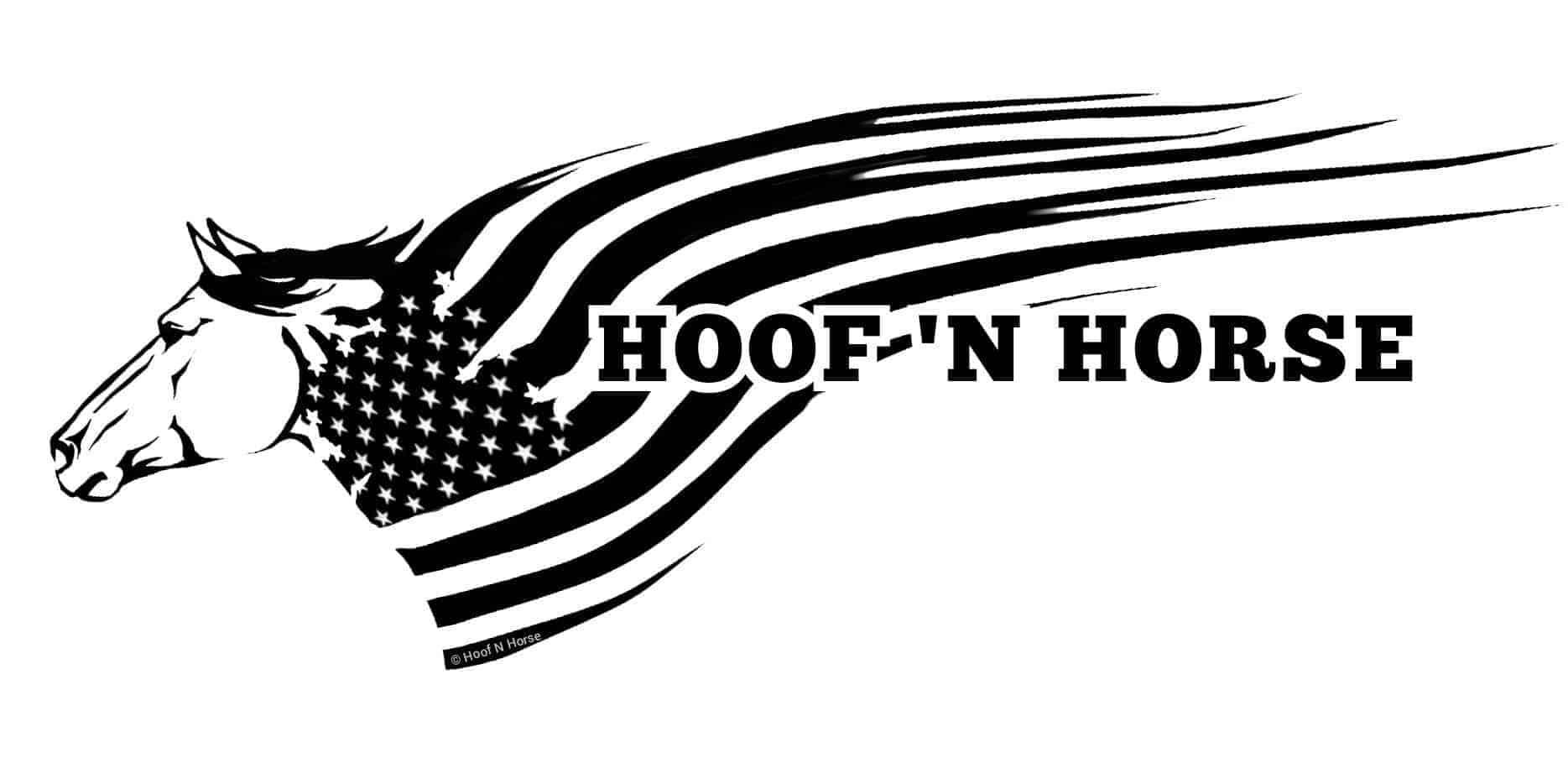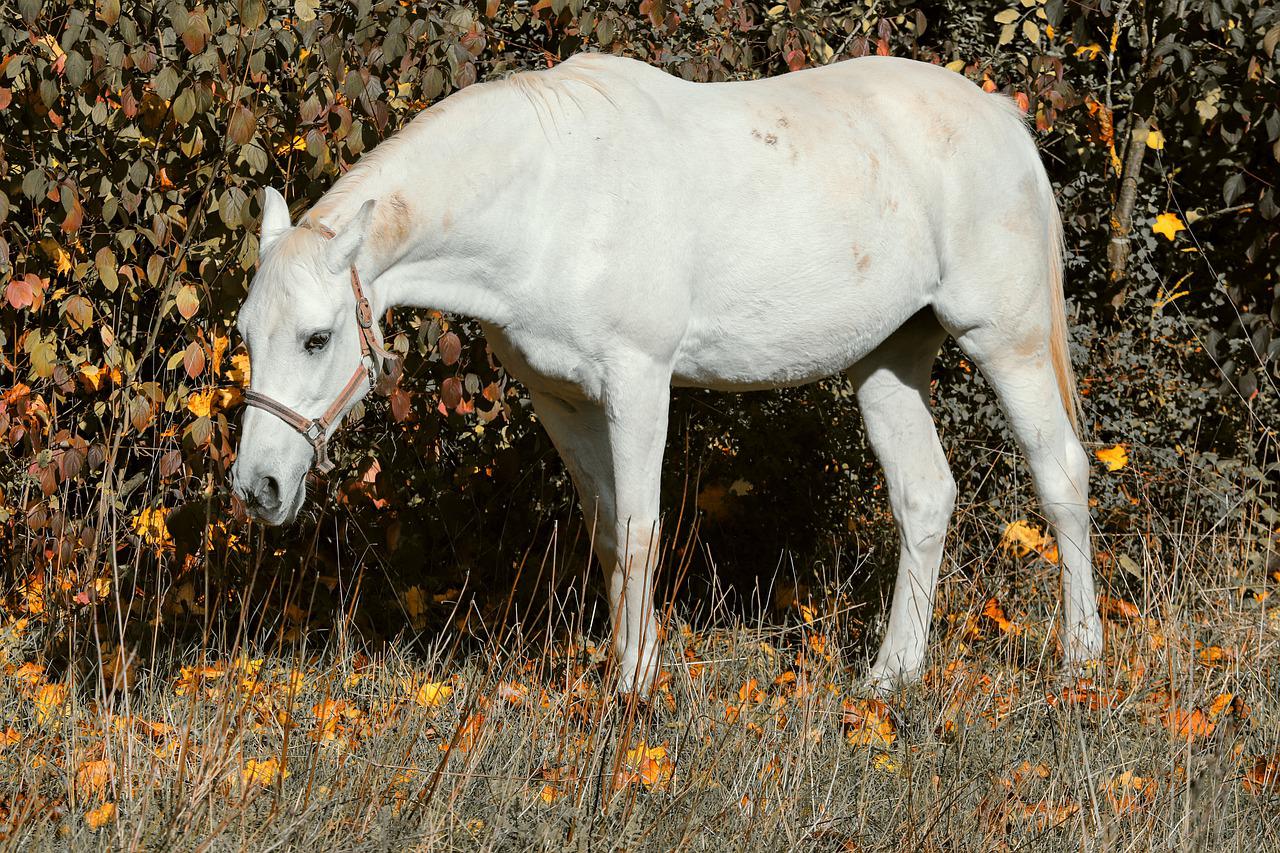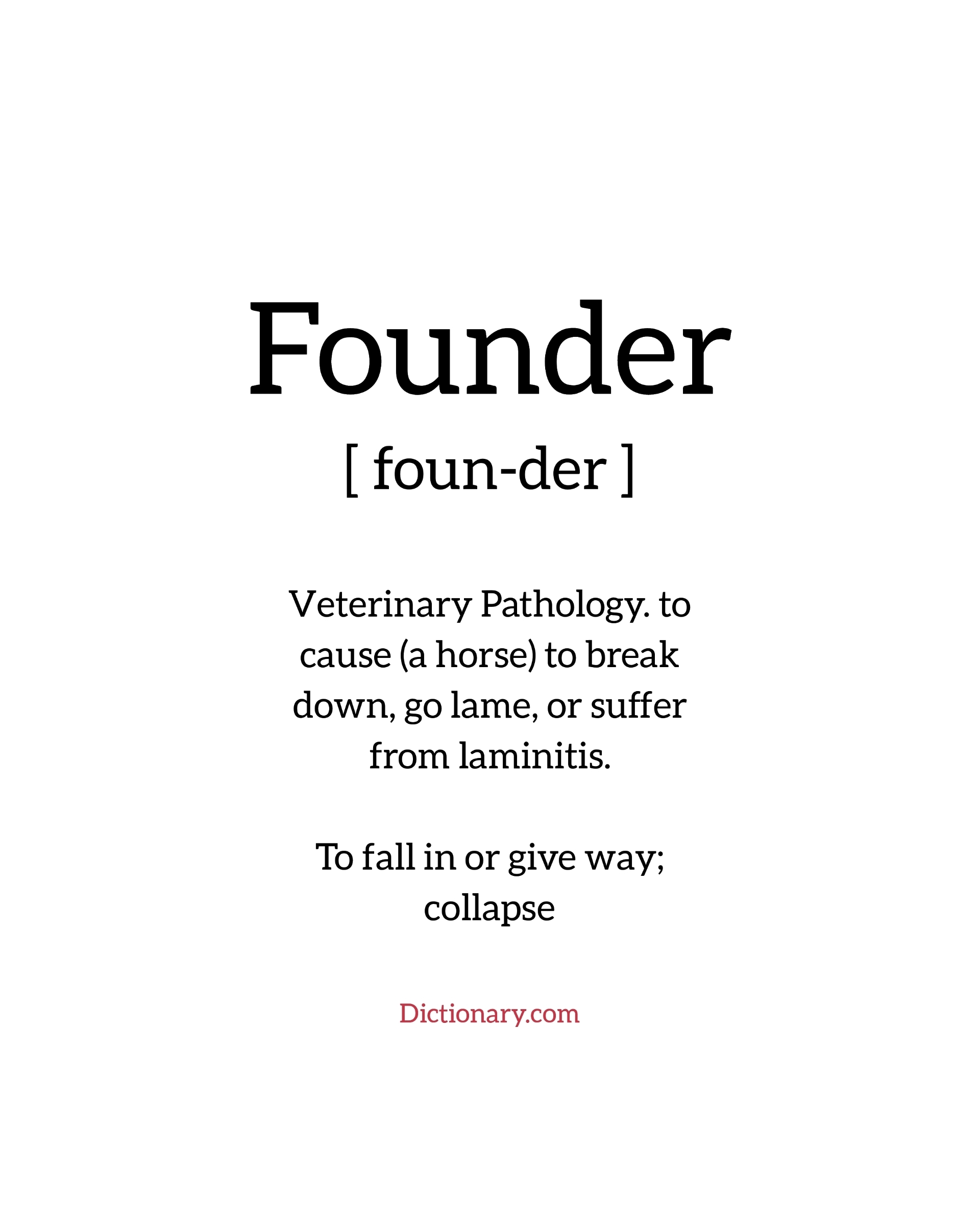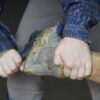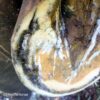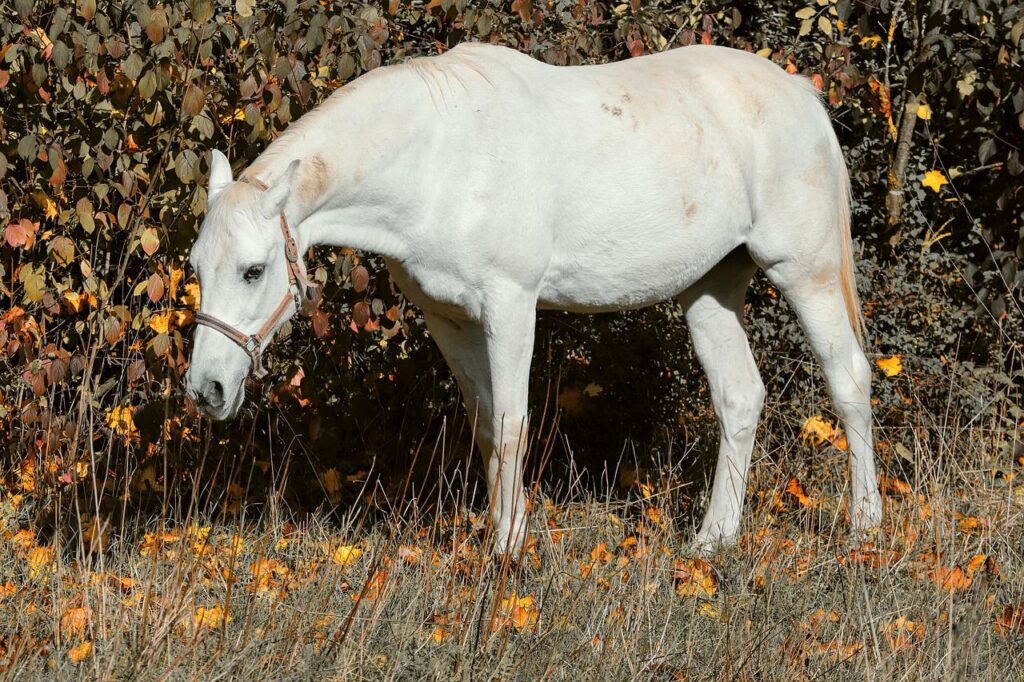
Founder is a term that has become the horse owner’s worst nightmare.
Thousands of ponies, donkeys, and horses succumb to founder every year, often with a very poor prognosis. This disease comes quick, hits hard, and doesn’t go away without a fight.
Depending on the severity, the best outcome is a slow recovery with lifetime preventative management. Horses who have been diagnosed with founder will experience two permanent changes: internal deformity of the hoof and an increased risk of recurrent issues.
According to William Moyer, DVM in an article from Equus Magazine, “Treatment of a foundered horse can only be considered an attempt to allow the horse to exist comfortably with structural damage…you can diminish pain and possibly prevent more damage, but you can’t reverse what has been done.”
Now with the bad news over with, here are some ed-shoe-cational facts that will help inform you about this disease, its effect on the hoof, its treatment, and most importantly – its prevention.
What Is Founder?
One of the most complicated topics in equine podiatry, founder comes with a long and technical explanation. Fortunately, understanding the basics is a painless process if we start learning about the first stage of the disease: Laminitis.
In an article from The Laminitis Site, laminitis is defined as “inflammation of the laminae, or lamellae…”velcro-like” connections between the pedal/coffin bone and the hoof.”
The causes of this inflammation can be categorized into three main etiologies:
- Endocrine (metabolic/hormonal)
By far the most common, endocrinopathic laminitis is caused by metabolic disorders such as Cushing’s disease or Pituitary Pars Intermedia Dysfunction (PPID), Equine Metabolic Disorder (EMS), and other diseases that are linked to hormonal imbalances leading to insulin dysregulation.
- Sepsis
This is often referred to as Systemic Inflammatory Response System (SIRS). Laminitis caused by inflammation is associated with a septic illness such as carbohydrate or grain overload, retained placenta after birth, colitis, or peritonitis.
- Mechanical
Generally due to trauma or concussion-related injuries, when there is a loss of laminar integrity, the laminae mechanically stretch and separate. Supporting Limb Laminitis (SLL) happens when one limb is overloaded with weight to compensate for the loss of another limb’s function, e.g., injured leg. Other causes of mechanical stress could be the consequence of overgrown hooves or prolonged, fast work on hard surfaces.
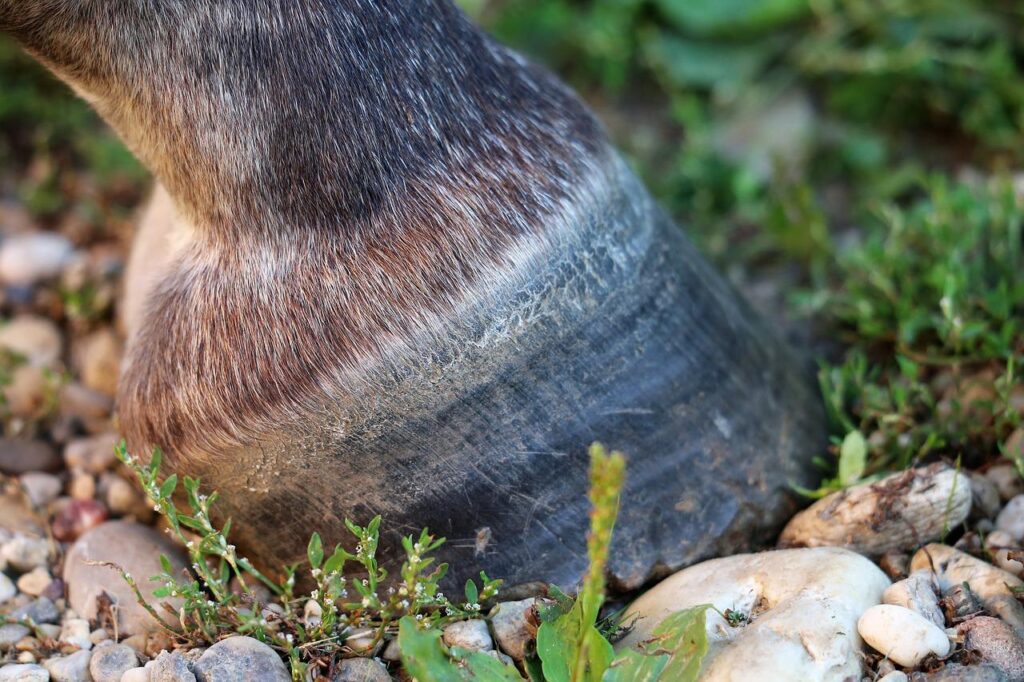
After the initial cause of laminitis and the first appearance of lameness, also known as the developmental phase, laminitis can go one of three ways: bad, worse, or terrible. The good news is that not every horse will progress into the last phase.
The acute phase of laminitis is where symptoms start to show. Lameness is evident and will vary in level of severity depending on the horse. Heat is often present in the hoof and though it appears normal, inflammation has already begun to damage the laminae inside the hoof wall.
The sub-acute phase of laminitis is the ultimate standoff, where the disease decides if it wants to surrender, or progress into the final battle. The time between the onset of laminitis and the beginning of this phase typically is between 1-3 days. If it stops here, the only marks the disease will leave behind are fever rings in the hoof wall, which will grow out within a year.
The chronic phase of laminitis happens when the connection between the laminae and the sole are destroyed. Extreme pain and hoof deformity will be the leading symptoms as the coffin bone, or distal phalanx, inside the hoof starts to rotate. Dished-out walls, multiple fever rings, dropped or prolapsed soles, and a widened white line are the trademarks for the final stage of laminitis. This chronic phase is what’s known as founder, literally meaning to fall in or collapse.
“Dished-out walls, multiple fever rings, dropped or prolapsed soles, and a widened white line are the trademarks for the final stage of laminitis.
This chronic phase is what’s known as founder, literally meaning to fall in or collapse.”
How Does It Affect The Hoof?
According to an article by leading farrier Doug Butler on AAEP.org, founder occurs when “the coffin bone rotates or sinks inside the hoof capsule when the hoof bone bond fails.”
As mentioned before, the actual cause of this rotation is from chronic laminitis. The inflammation, or swelling of the laminae is due to a lack of blood flow, which decreases the oxygen and nutrient supply that the cells of the laminae require. This ‘disconnection’ affects the hoof in several ways, both internally and externally.
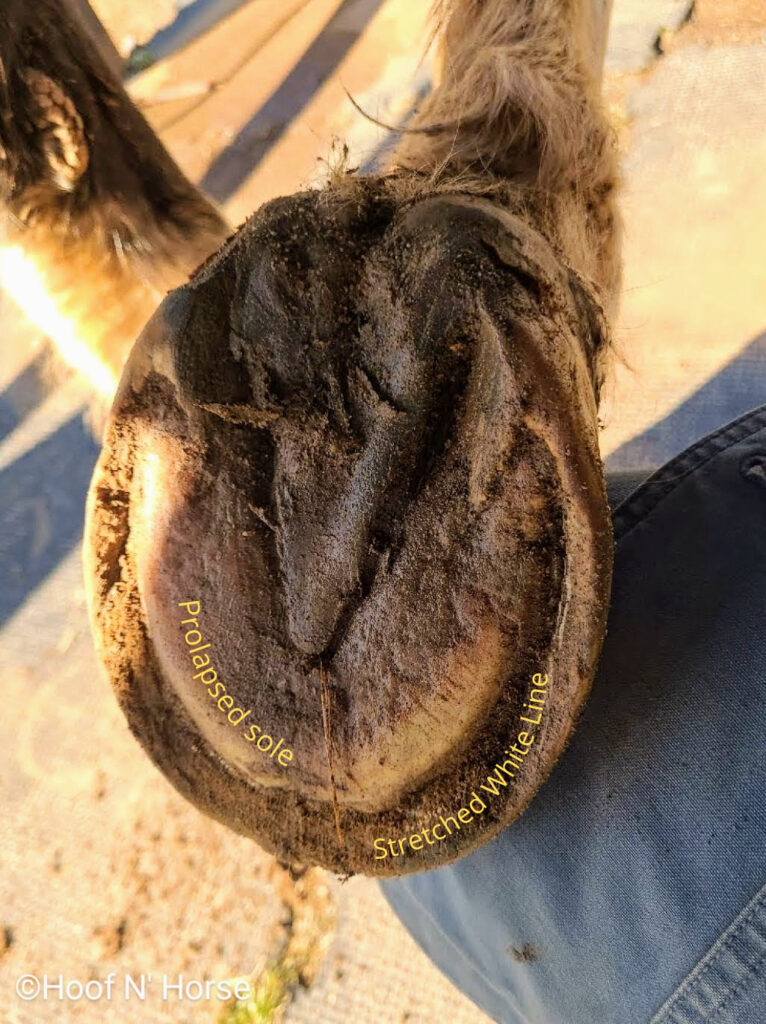
Following laminitis, changes seen from the bottom (solar surface) of the foot typically include stretched white line and dropped sole. The epidermal (insensitive outermost) laminae, also known as the white line, will appear stretched. In many cases the detached bone will push against the bottom of the foot, or sole. This causes a solar prolapse or worse – solar penetration. Described as the worst case scenario following laminitis, an article from The Laminitis Site reveals how the sole starts and ends its dangerous descent:
“Following rotation (and sinking), the tip of P3 (coffin bone) may compress solar cells, causing the sole to become flatter and thinner, and potentially leading to bone loss (osteolysis) of P3 and necrosis of the solar corium. This in turn can lead to abcessing, penetration of P3 through the sole, or osteomyelitis.”
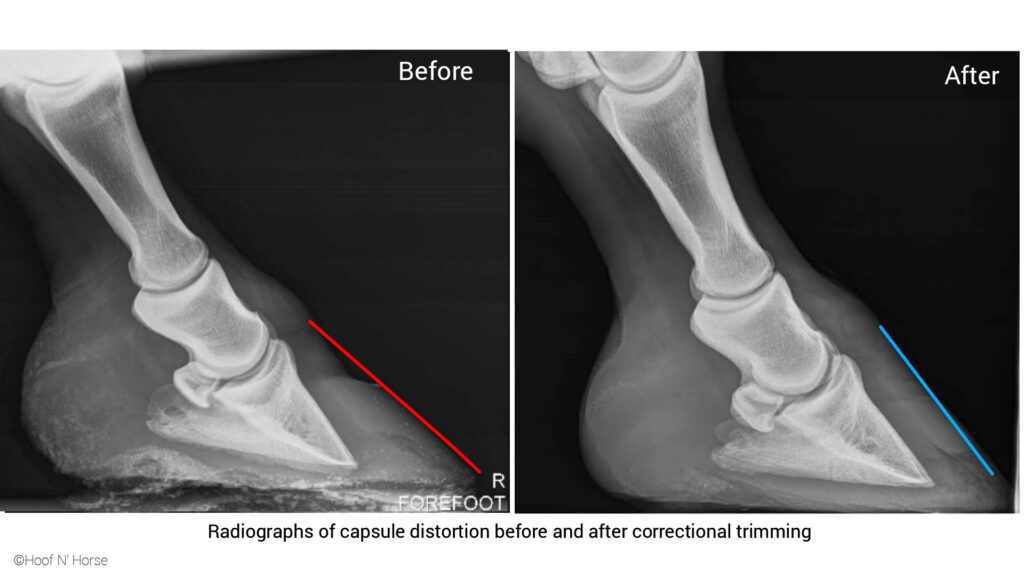
Let’s say for a moment that, luckily, the horse doesn’t have a solar prolapse. If the laminitis stops at the sub-acute phase, the hoof will still experience noticeable changes. Capsular deformity, or hoof wall distortion, is another negative effect that occurs after laminitis. A distinct ‘wedge-shape’ forms as the weakened laminae is stretched out from the bottom; this happens when the hoof wall is no longer parallel to the coffin bone (see photo above). One of the most easily identifiable abnormalities of founder is the long ‘dished’ toe caused by this stretching effect.
The second noticeable effect will be distinctive horizontal ‘rings’ that encircle the circumference of the hoof. These rings, also called fever rings, indicate that the hoof underwent an inflammatory response called laminar hyperplasia.
“Fever rings in the hoof may be formed because of laminar hyperplasia (thickening and/or excess growth). These rings can be induced by inflammation that displaces the tubules outward or because of the tubules within the hoof buckling under compression.”
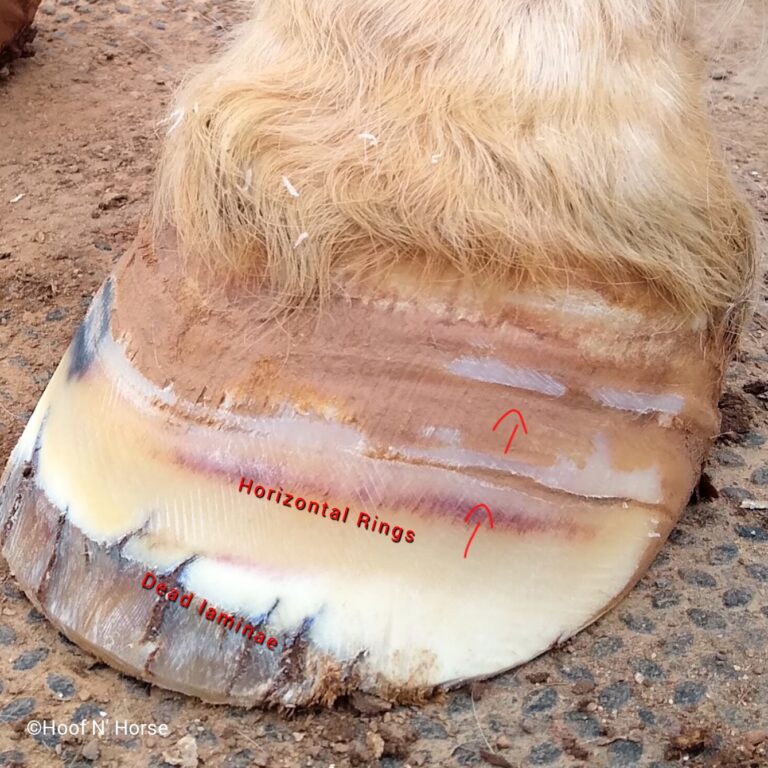
Even after your farrier and veterinarian have applied the appropriate correctional trim and treatment plan, your horse will have a tough road ahead. Of course, this always depends on the severity of the disease and each individuals response. ‘Chunky-monkey’ horses almost always have the hardest fight, along with horses who have underlying diseases, such as Cushings or EMS. The key to founder recovery is learning the root cause, addressing the horse’s individual medical needs, and being proactive by making lifestyle adjustments.
